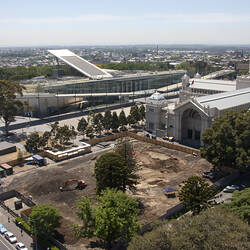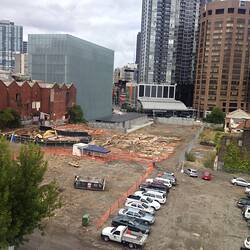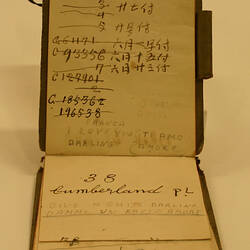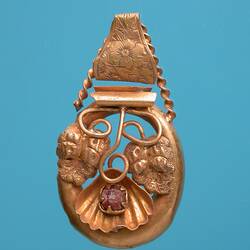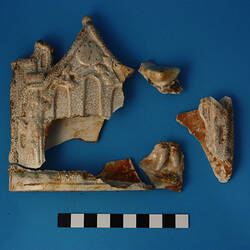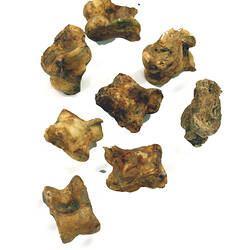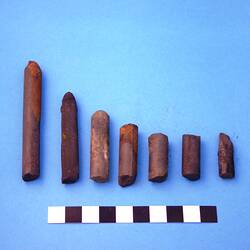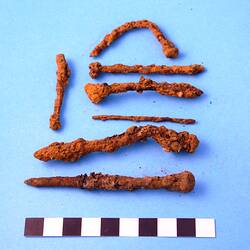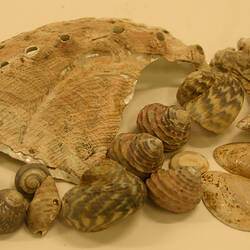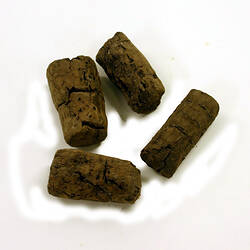Historical Archaeology
Museums Victoria is custodian of five historical archaeology assemblages: the Commonwealth Block, 300 Queen Street, the Royal Exhibition Building (REB) Western Forecourt, Australian Defence Industries (ADI) and Port Fairy. As the detritus of daily life from an industrial society, the artefacts comprise predominantly of sherds of pottery and glass with some metal finds including jewellery and building materials. There is also a sizable quantity of faunal remains, including oyster shells. Because wood and leather decompose underground, there are very few examples of these materials.
The Commonwealth Block assemblage is the largest with approximately 508,000 artefacts. The REB Western Forecourt and 300 Queen Street assemblages comprise approximately 1500 and 600 artefacts respectively. The yet to be rehabilitated ADI and Port Fairy assemblages appear to comprise approximately 1500 artefacts. Associated field notes, maps, photographs, laboratory notes, data and published reports are also held by the Museum.


